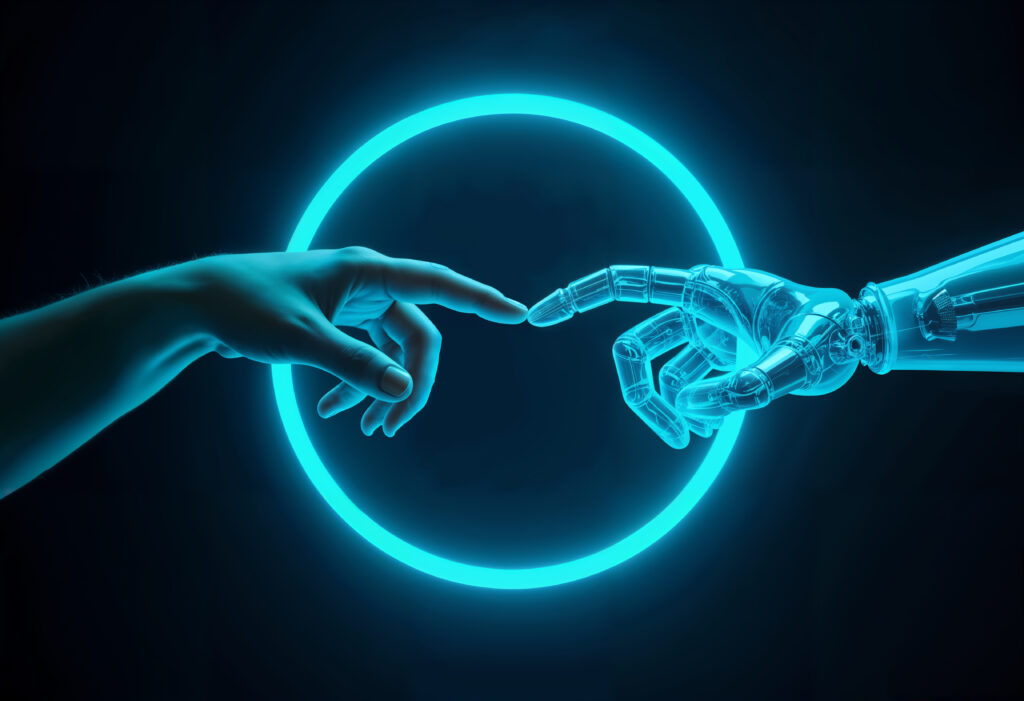The Irreplaceable
Human Touch
The Irreplaceable Human Touch: Why AI Cannot Connect Like Humans Do

In the age of Artificial Intelligence and automation, much of our attention is drawn to what machines can do. From processing vast amounts of data to performing repetitive tasks with precision, AI systems are revolutionizing industries. However, there is a vital aspect of work and life that AI cannot replicate: the ability to connect with others. This invisible labor, often overlooked, is the connective tissue of our societies.
The Essence of Connective Labor
In her book “The Last Human Job: The Work of Connecting in a Disconnected World,” Allison J. Pugh delves into the concept of “connective labor.” This term refers to the myriad ways humans help each other feel seen, understood, and connected. It is the invisible work that underlies visible tasks, often unrecognized and unreimbursed, yet crucial for the fabric of society.
Connective labor is about more than just social interactions. It encompasses the nuanced, spontaneous, and often unpredictable ways in which humans relate to one another. Neuroscientists refer to this phenomenon as “perceptual crossing,” a process where individuals see and reflect each other’s understanding, creating a sense of mutual recognition and humanity.
The Crisis of Depersonalization
As data analytics and automation push systems towards efficiency and reproducibility, we find ourselves in the midst of a depersonalization crisis. This machine logic, aimed at scaling operations and expanding access, tends to edge out the artisanal practice of human connection. While automation can perform tasks, it lacks the capacity for genuine human interaction – an essential element of many professions.
In healthcare, for instance, the shift to electronic records has increased efficiency but at the cost of personal attention. Doctors report higher rates of burnout, as the focus on checklists and protocols overshadows the human connection with patients. Similarly, in the gig economy, connective labor is reduced to consumer services, shaped and surveilled by technology, often resulting in alienating work environments.
The Importance of Human Connection

Human connection is not just a lubricant for transactions; it is fundamental to our social health. Leaders who prioritize relationships can motivate others and foster a culture of care, as seen in educational settings where a principal’s influence on teachers’ emotions can significantly impact a school’s outcomes. Social intimacy in various venues, from grocery shops to playgrounds, creates communities and fosters a sense of belonging.
Moreover, connective labor is intertwined with issues of social inequality. The rise of lifestyle work – investment advisors, coaches, therapists for the affluent – highlights how access to personal attention is often reserved for the wealthy. This trend is exemplified by “concierge medicine,” where only those who can afford it receive personalized care and clinical intuition.
The Irreplaceable Human Touch
While AI and automation can offer customization and a semblance of social interaction, they cannot replicate the depth of human connection. The spontaneous, error-prone, and deeply personal nature of human interactions is irreplaceable. Machines may be efficient, but they lack the “spider sense” that creates rapport and enables collaboration.
In workplaces, excessive standardization not only hinders relationships but also makes humans feel like automatons. The process becomes the point, distracting from the actual work and diminishing the quality of interactions. In contrast, human-centric approaches in education, healthcare, and everyday interactions underscore the irreplaceable value of human connection.
Conclusion
As we navigate the rise of AI and automation, it is crucial to recognize and value the irreplaceable human touch. Connective labor, though often invisible and unrecognized, is the foundation of our societies. It is through these connections that we help each other to be human, fostering a sense of belonging and mutual understanding. In a world increasingly driven by data and efficiency, preserving the essence of human connection is more important than ever.
